
How to Avoid Scratches and Peeling on Your Nonstick Cookware
New nonstick cookware is every chef's dream come true. It's nonstick, so it's easy to clean, and you don't have to worry about your food sticking to the surface. But over time, it can become scratched and worn, which means your cooking surface is compromised.
Small scratches and chips on nonstick pan bottoms can also result in undercooked food and bacteria growth. The good news is, there are a couple of ways as listed below to avoid scratches on nonstick pans and keep them looking new for longer.
Choose the right cookware to start with.
When choosing pots and pans for your kitchen, it’s essential to understand that not all nonstick surfaces are created equal. Below are some considerations that may help you decide:
Type of metal
The material used in making the pan will determine how it reacts when heated. Choose a metal that's been proven to be durable and long-lasting.
For example, stainless steel will not scratch easily but can be prone to rusting if it is not properly cleaned after use. Aluminum pans are lightweight, but they warp easily after prolonged use and are not suitable for simmering or deep frying since they are susceptible to warping or melting at high temperatures.
Copper is an excellent conductor of heat, but it requires regular polishing or re-tinning if you want your pan to maintain its shine over time. Cast iron is inexpensive and sturdy, but it requires seasoning before use and can be difficult to clean if food sticks to its surface during cooking.
Weight and thickness of the metal
The heavier and thicker a pan is, the less likely it is to scratch easily. This is because heavy metal conducts heat better than thinner materials do. Thicker materials can withstand higher temperatures without warping or melting at their edges (which can lead to scratching).
Tempering process
Nonstick coating works best when applied to a surface that's been tempered first. Tempering involves heating your cookware at high temperatures for several hours until it reaches its melting point, then quickly cooling it down. The best way to avoid scratches and peeling on your cookware is by choosing pots and pans that have undergone this process.
The best nonstick pans are made from certain types of hard-anodized aluminum, which are much more durable than their “regular” counterparts. In addition, they come in various shapes and sizes, so there’s sure to be something that fits your needs.
Use a Moldy Dish Sponge to Scrub Tough Residue
The nonstick coating on your pots and pans is vulnerable to damage from metal utensils and abrasive cleaners. Using the wrong tools risks scratching or even peeling off the nonstick surface, making it difficult for food to release from the pan.
Nonstick cookware is easy to clean, but that doesn't mean you should use a rough sponge or abrasive cleanser. Scratches and peeling can occur when you use anything other than plastic or a wooden spoon.
To keep your cookware looking new, avoid using steel wool and harsh chemicals on it; instead, try this simple trick:
- Remove food residue from your pan by filling it with warm water and a drop of dish soap, then scrubbing with a nylon brush or sponge. After you've removed as much food residue as possible, pour out the water and rinse the pan under running water.
- If there are still stains on your pan, sprinkle it with baking soda, then rub it gently with your hands until all the stains are gone. Rinse thoroughly with warm water to remove any baking soda residue left behind.
- If there are still stains after cleaning with baking soda, fill the pan with white vinegar and let it soak for 30 minutes before rinsing it off thoroughly under running water to remove any remaining vinegar residue. The vinegar will also help remove stains from your cookware.
If you've been using soap or other harsh cleaners, this technique might be just what you need to get back to your original condition.
NOTE: Don't wash with soap or harsh scrubbers when cleaning your nonstick pan; use only warm water and a soft sponge or dishcloth. This will prevent scratches on the surface that could rip off bits of the coating when you're cooking food later on.
Avoid Sharp Objects and Metal Utensils
Nonstick pans are made from a thin layer of polytetrafluoroethylene (PTFE), also known as TEFLON®. PTFE is a synthetic polymer that helps the pan slide easily over food.
It also repels stains and odors, making it ideal for cooking with tomatoes or garlic. Because PTFE is porous, you must use wooden or plastic utensils when cooking with nonstick pans. Using a metal can scratch the surface and cause it to peel off completely.
The same goes for sharp objects like knives, which can scratch the surface and cause it to flake off over time.
Hand Wash Your Nonstick Cookware (Almost) Every Time You Use It
Nonstick cookware comprises two main parts: an aluminum core and a nonstick coating. The two work together to distribute heat evenly and prevent food from sticking during cooking, but they don't last forever. The aluminum core can be damaged by using pots or pans that are too hot or by banging them against other hard objects (like each other).
The coating on nonstick cookware is what wears down over time. It's usually made from a combination of plastics, resins, and synthetic oils or fats mixed in a polymer base. Since these coatings are made from materials that will degrade over time, the best way to care for your nonstick cookware is to hand wash it after every use.
This will help keep the coating in good shape and prevent scratches. You can even use a soft sponge or pad if you want, but be sure not to use harsh scrubbers that might damage the finish. If you don't hand wash your nonstick cookware after every use and don't dry it thoroughly, food can build up on the surface and cause scratches or peeling. This will eventually make your pan unsafe to use.
Don't put it in the dishwasher if you're worried about scratching your pan's nonstick coating. Dishwashers can be very harsh on cookware, leaving streaks behind on pans with nonstick coatings.
You can also use a brush or sponge with hot soapy water on pans with nonstick coatings to remove food particles and dirt before washing. This works best if you do it after each use rather than waiting until everything is stuck on there.
Tips for washing and drying Nonstick Cookware
- Always hand wash your cookware, even if the label says it's dishwasher-safe. Putting a nonstick pan in the dishwasher can cause damage from harsh detergents and high temperatures.
- Wash by hand immediately after use. Food residue on a hot pan will start to burn onto the surface as it cools down, causing discoloration or even melting. If you wait until later in the day or evening, you risk letting more food get stuck in crevices that are harder to clean later.
- Don't leave water sitting in the pan while it cools down. If there's water left inside the pan when you put it away wet, bacteria could grow inside and damage its surface over time. Instead, let cool pans air dry completely before putting them away with no water left.
Don’t Preheat Your Pans Empty
Preheating your pan is a habit that many cooks have. It’s often thought that preheating the pan will prevent sticking or burning, but this isn’t always true. The purpose of preheating a pan is to heat it evenly and rapidly so that when the food goes in, the pan's surface can transfer heat to the food quickly.
Preheating an empty pan takes time, so you’ll lose valuable cooking time right off the bat. An empty pan also cools down faster than one with food, so there’s no benefit to preheating an empty pan either.
Importance: Preheating the pan is a great way to help your food get a good sear, but don’t do it empty. You may be tempted to heat the pan and add oil or butter, which can cause flames! If you want to preheat the pan, add a bit of oil or butter to it before turning on the heat so that you don’t risk burning your kitchen down.
Another reason to skip preheating your pans: it can damage nonstick surfaces. These days, most nonstick pans come with a metal coating over their ceramic or metal bodies. This coating is designed to withstand high temperatures without breaking down or flaking off into your food. But if you preheat an empty nonstick pan at high temperature, this metal coating can start flaking off into your food — not something you want happening on day one with new cookware!
Tips: If you have an induction stovetop (like many professional kitchens), ensure that when you’re preheating your pan that it’s set to “cool” and not “high.” The reason for this is that induction stoves work by creating an electromagnetic field on the surface of the pan itself. This causes resistance in whatever is placed on the stovetop. If you put water in an electric skillet on high, it will boil quickly because an electromagnetic field causes no resistance. But if you put water in an electric skillet on high while it’s off and then turn on the power, there will be no resistance from an electromagnetic field, and therefore no boiling occurs (essentially).
Lower The Heat When Cooking Anything Creamy or Sugary
Lowering the temperature will help prevent the sugars in these recipes from burning. When foods burn, they leave behind a layer of carbon, which can permanently damage your pan.
When you lower the heat and stir more frequently, you'll help prevent food from sticking to the bottom of the pan. If food does stick, use a scraper to loosen it before washing. Do not let food sit in the pan for long periods after cooking. This will cause more damage to your nonstick coating over time.
Stack your pans properly for storage
If you're used to storing your pots and pans in a cabinet, it's time to rethink your strategy. If you stack them on the other, the bottoms will get scratched up quickly. To prevent this from happening, place a cloth between each piece when you store them. The fabric will protect the surface of each pan so that it won't get damaged when stacked together.
The best thing about this tip is that it's cheap and easy! You can use any type of fabric as long as it's not too thin or flimsy — old sheets work well because they are usually sturdy enough to protect against scratching while still being soft on the surface of your pots and pans.
If you have different sizes of pots and pans, ensure that they're all packed together tightly when storing them. This way, they won't shift around and damage each other while being moved around or transported.
Takeaway
When nonstick surfaces are scratched, their protective coating is damaged and can cause the nonstick surface to peel off. The scratches are also a breeding ground for bacteria that may accumulate and cause health problems.
Bacteria can find their way into nonstick surfaces through cracks or chips in the surface coating. Most nonstick cookware warns not to use metal utensils since metal can damage the surface and leave microscopic scratches where bacteria can grow. Most manufacturers like Fissman recommend using wood or silicone utensils for nonstick cookware. Sharp objects like knives, scissors, pizza cutters, and hard materials like metal spoons and spatulas can scratch and damage the surface.
Source:
10 Tips on How to Care for Nonstick Cookware - Souper Diaries
How to Use and Care for Nonstick Cookware (thespruceeats.com)
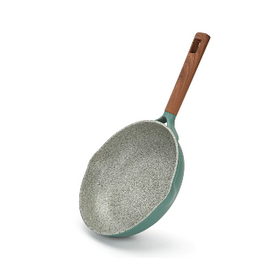
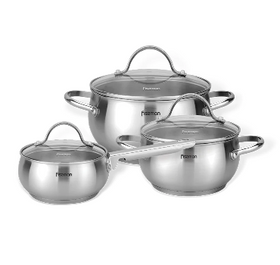
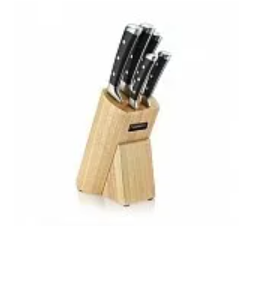
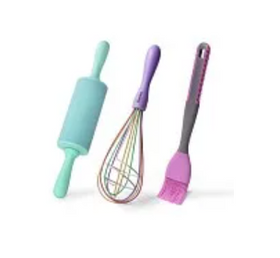

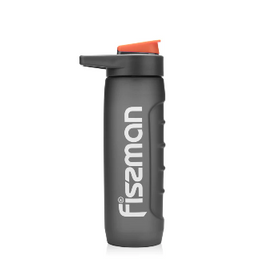
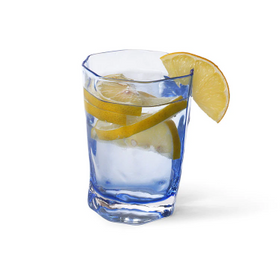






























Leave a comment